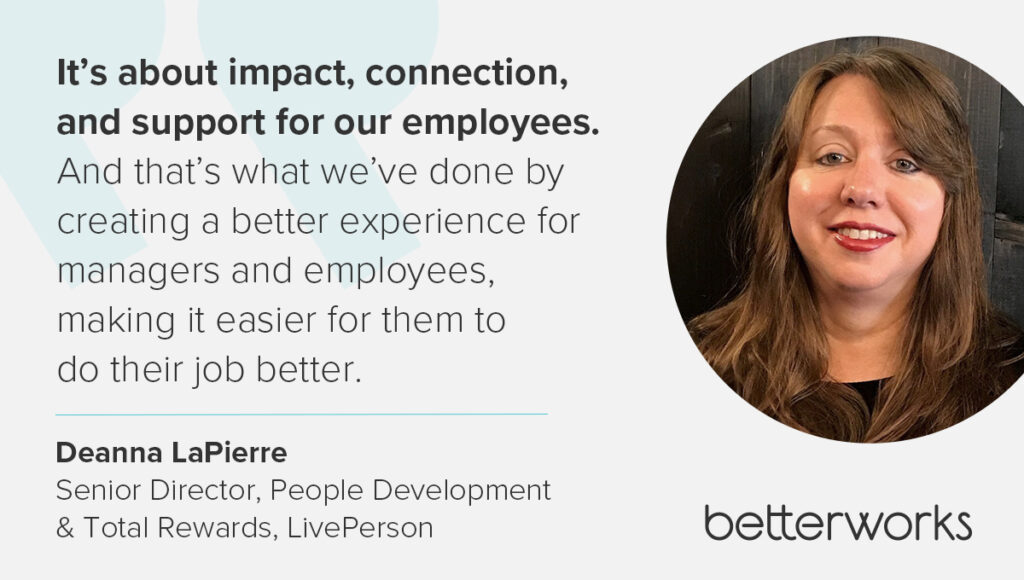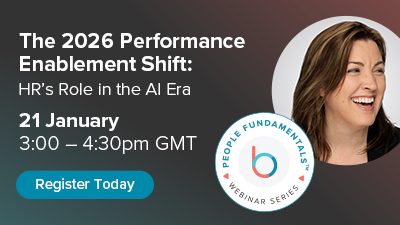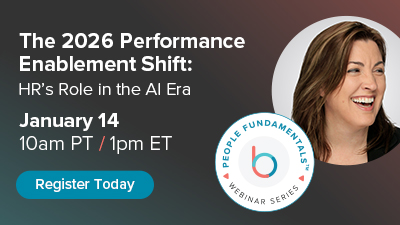Setting goals as a manager has always been important—but today, it’s absolutely critical. In a fast-moving, hybrid, and tech-powered world, managers play a pivotal role in translating big-picture strategy into work that feels relevant, motivating, and achievable for their teams.
Too often, though, they’re flying blind. Without the right systems or support, even the most capable managers will lose steam. Their teams lose clarity, energy, and connection to the bigger picture.
That’s not just a management issue—it’s a business risk. According to Betterworks’ 2024 State of Performance Enablement Report, two in three managers say they lack the support they need to guide employee development and deliver performance.
That support starts with a fundamental shift in how we think about goal setting. It’s no longer about top-down directives; it’s about enabling alignment, engagement, and adaptability through coaching, continuous feedback, and modern tools like AI. In this model, managers are catalysts for performance, empowered to drive clarity and impact in a dynamic, hybrid work environment. And HR leaders play a pivotal role in setting them up to succeed—with effective performance goals tied to organizational goals and designed to elevate employee performance and long-term success.
4 signs your approach to goal setting is outdated
If your managers are struggling to turn strategy into team execution, outdated goal-setting habits may be part of the problem. Even the most well-intentioned processes can fall short when they lack the clarity, flexibility, or relevance today’s teams need. Here are the problems to look for:
- Goals are reviewed once a year, if at all. Without frequent checkpoints, there’s no space to adapt or refocus when priorities shift.
- Employees can’t connect their goals to larger outcomes. When the “why” is missing, engagement and ownership suffer.
- Managers are stuck in a reactive mode. Instead of using goals to drive clarity, they’re putting out fires and chasing vanity metrics.
- Technology is creating more noise than clarity. Only 24% of employees using traditional HCM tools say their goals feel aligned with organizational priorities, Betterworks research found.
These aren’t just operational issues—they’re signals that your systems are out of sync with the way modern teams work. The fix is smarter, more sophisticated support for how managers set, manage, and evolve goals.
Why managers can’t do this alone
Setting goals as a manager sounds straightforward—until you’re the one responsible for making it happen. The reality is that managers are overwhelmed, under-resourced, and stuck operating within systems that were never designed to support the demands of today’s work environment.
They’re expected to align their teams to shifting business priorities with little to no visibility into what other teams are doing. They’re handed templated goal frameworks that don’t account for the complexity of their work. They’re required to deliver feedback in real time, but often don’t have access to the data that shows how their team is actually performing.
On top of that, they’re often trapped in a tangle of confusing processes. Performance updates live in one platform, employee engagement metrics in another, goal tracking in yet another— and managers are the ones stuck stitching it all together. Instead of developing their people, they’re stuck chasing down spreadsheets.
This is what failure looks like before it shows up in your metrics. Not because managers aren’t trying, but because they’re doing it alone, and the system is stacked against them.
On the flip side, LivePerson’s experience illustrates just how transformational robust support from HR can be. When Senior Director, People Development & Total Rewards Deanna LaPierre and Talent Development Manager Matthew Meech set out to improve performance management at the fast-growing tech company, improving the experience for both managers and employees was central to their goals. “It’s about impact, connection, and support for our employees,” Deanna says. “And that’s what we’ve done by creating a better experience for managers and employees, making it easier for them to do their job better.”

A 9-step framework for strategic goal development with managers
As more companies focus on transforming performance management to reflect real-time agility and employee development, goal setting becomes a make-or-break capability for managers.
When managers have the right structure and support, goal setting becomes more than a formality—it becomes their most powerful lever. But they won’t get there on instinct alone. They need a consistent framework that supports both business outcomes and individual growth.
To get there, HR professionals need more than a checklist to hand off to managers. They need a blueprint for enabling the kind of goal setting that actually drives performance, engagement, and adaptability. Here’s how to build that system.
1. Cascade down and ladder up
Start by anchoring team and individual goals to organizational goals—and give team members the space to propose personal goals that ladder back up. This dual alignment keeps everyone working in the same direction, while also fostering autonomy and engagement.
2. Balance new and existing priorities
Too often, goal setting focuses exclusively on new initiatives. But core responsibilities matter, too. A balanced portfolio of achievable goals ensures the team stays grounded in what’s essential while making room for stretch and innovation.
3. Blend committed and aspirational goals
Committed goals reflect must-deliver outcomes; aspirational goals create space for experimentation and growth. A healthy mix builds momentum and engagement without compromising accountability.
4. Include both performance and development goals
High-performing teams aren’t just delivering results—they’re setting new standards for performance every day. Development goals signal that growth is a shared priority, and they help keep performance conversations forward-looking and motivating. They’re also a critical part of defining clear coaching objectives for managers—providing a roadmap for how to guide, develop, and retain talent over time. This strengthens leadership skills and emotional intelligence across your organization.
This is especially important for streamlining work to empower employee growth, enabling people to move forward in their careers without derailing business outcomes.
5. Balance short- and long-term impact
Some goals are about delivering value today, while others are about investing in what’s next. Help managers structure specific goals that drive impact now while building capability for long-term success. It’s the difference between firefighting and long-term planning.
6. Build in agility
Things change. Goals should, too. Equip managers to revisit and revise goals regularly based on shifting business needs, team bandwidth, or emerging opportunities. This kind of agility is key to effective performance goals modern organizations rely on.
7. Make goals visible
When objectives and key results are shared across teams, people can see how their work connects—and where collaboration might amplify impact. Visibility also builds trust and reinforces accountability. This supports both communication skills development and the importance of corporate goal setting at scale.
8. Monitor progress
Managers shouldn’t have to guess whether goals are on track. Clear, consistent updates help surface risks early, recognize wins, and keep teams focused. AI in HR platforms can help surface trends and risks before they derail progress.
9. Hold regular check-ins
Performance is shaped over time, not measured at the end. Frequent, structured check-ins create space for coaching, realignment, and problem-solving, long before a formal performance review.
It’s not just better goal setting. It’s about building a management practice that’s dynamic, human, and deeply aligned to how work actually gets done. Effective goal setting for managers requires both structure and flexibility—and support from HR to make it sustainable.
Empower your managers
For HR leaders, this is the moment to turn intent into action. You’ve seen the gap. You know your managers are under pressure to align, coach, and deliver in conditions that are increasingly complex. But without systems designed to support these demands, even the best managers will struggle to keep up.
As Cheryl Johnson, chief product and technology officer at Betterworks, shared at EmpowerHR: “The future of work belongs to organizations that invest in their people, empower their managers, and align performance with impact.”
Your goal isn’t to turn every manager into a performance expert overnight. It’s to make goal setting achievable. To give them the clarity, tools, and feedback they need to do the job well. To create a culture where setting goals as a manager isn’t a burden, but is second nature.
It starts with embedding practices that support effective goal setting for managers—practices that emphasize clarity over compliance, agility over rigidity, and outcomes over activity. It means equipping managers with smart goals that are specific, measurable, achievable, relevant, and time-bound. And yes, it means reinforcing those behaviors with systems that enable—not obstruct—them.
Your organization’s long-term success depends on your ability to close the gap between strategy and execution. And managers, supported by HR, are the ones who do it.
To learn more about how to empower your managers, check out HR’s Ultimate Guide to Fostering Great Manager-Employee Relationships.
Empower your managers as coaches




